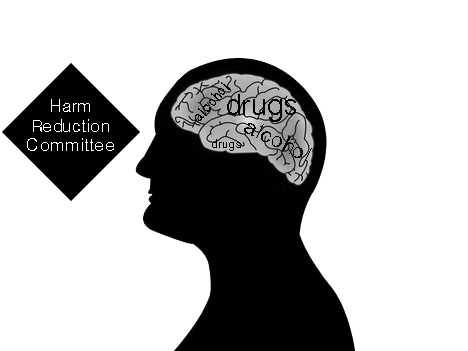Mira Braneck
braneckm@grinnell.edu
The Harm Reduction Committee met on Thursday, Nov. 5, to discuss different ways Grinnell can reduce both underage and excessive drinking. The goal of this particular meeting was to discuss “environmental-level strategies,” or ways to alter the context—places, occasions, and circumstances—in which students drink in order to increase safety and reduce negative consequences.
As a body that makes recommendations concerning policy and procedure, the committee discusses ways to reduce drug and alcohol abuse on campus, as well as increase safety and wellness through harm-reductive practices. They also work with various organizations on campus to plan events where alcohol will be served. Co-chaired by Jen Jacobsen, Director of Wellness, and Dixon Romeo ’16, SGA Vice President of Student Affairs, the committee is comprised of various members of the Grinnell College community, such as members of the faculty, the director of Campus Safety and Security, RLCs, a registered nurse from SHACS, members of the athletic department and student representatives.
In their November meeting, the committee used a study put out by the National Institute on Alcohol Abuse and Alcoholism (NIAAA) as a framework for their own recommendations. However, many of the strategies put forth by the NIAAA would most likely have less of an effect on Grinnell as a small liberal arts school, as the study was mainly aimed at large state schools. For example, compliance checks, or authorities sending an underage individual to attempt to buy alcohol at a local retailer, were discussed at length, until students present pointed out that fake IDs and the underage purchase of alcohol are not as prevalent at Grinnell as at other schools.
Much of the discussion was aimed at Lyle’s Pub, the only place on campus that serves alcohol. Becca Heller ’16, manager of Lyle’s Pub, explained the extensive training the staff goes through. She pointed out that Grinnell is a small school, and that, in spite of fake IDs, the staff often knows who is and who is not 21. If they believe the ID to be fake, the staff is encouraged to ask for P-cards.
“My staff knows that they will be fired immediately if they are serving underage people. We take it very seriously at Lyle’s,” Heller said.
“I don’t know if Lyle’s is really the problem —it’s not having the manpower to check IDs at parties,” added Maggie Lawter, RLC for Loosehead, further stating that, “as an institution we do not enforce the 21 drinking age.”
One of the major questions raised at the meeting was what the group saw as more effective: encouraging safety or more heavily enforcing the drinking laws.
“I think that there is more conversation and more willingness to ask for help [with encouraging safety] … than if you are worried you are going to be penalized,” Heller said. “If we were to transition to a more enforcing strategy … there would be a lot of resistance to it.”
Director of Residence Life and Orientation, Joseph Rolón, pointed out that if Grinnell were to become a stricter institution, there might be less active bystanderism and fewer students would be willing to call RLCs for help.
“I think you would get a lot more resistance from students to enforce the 21 drinking age … encouraging safety is more effective and more received,” Lawter said.
One of Jacobsen’s goals is to see the binge-drinking rates at Grinnell come down, as well as changing the amount of drinking in general. While the overall binge-drinking rate has dropped from 48 to 45 percent in the last few years, it is still above the national average. She believes there is a stronger culture of binge and underage drinking.
“I think the harm reductive practices on campus are making people more aware of the choices they’re making. … Something I’ve noticed at Grinnell compared to other institutions is that it’s more normalized here,” Jacobsen said. “It’s more normal for students to drink underage at Grinnell than other places.”
“My goals specifically working with this committee and the overall work that SGA is doing center around safety and wellness. Wellness centers around harm reduction,” Romeo said. “I’ve put a lot of energy into making sure SGA does a lot of harm reductive things and makes [campus] safer for students.”






















































Jen Jacobsen • Nov 13, 2015 at 6:18 pm
Just wanted to note that the Harm Reduction Committee is an open committee– we meet every other Thursday at noon (often in JRC 209)– meetings are published in the campus calendar. Any member of the Grinnell community interested in this topic is welcome to attend.